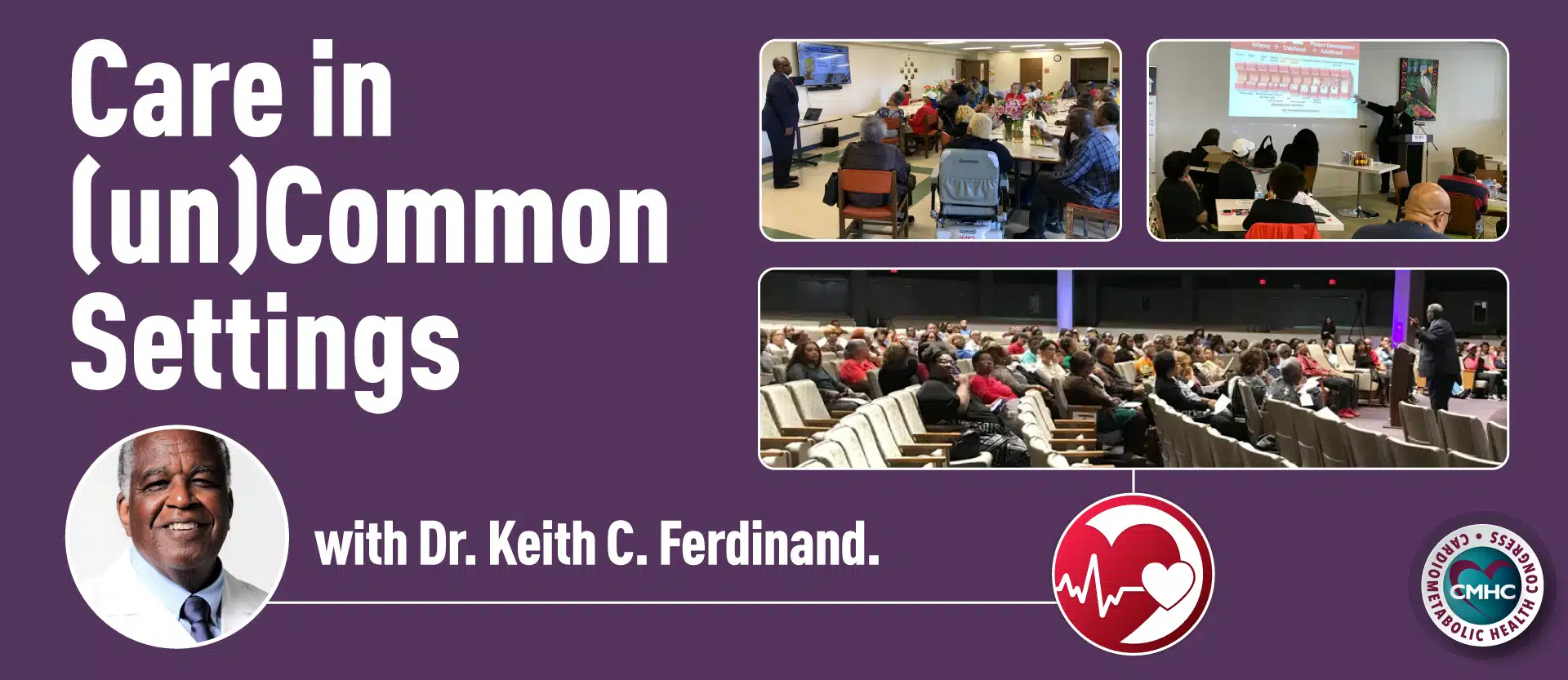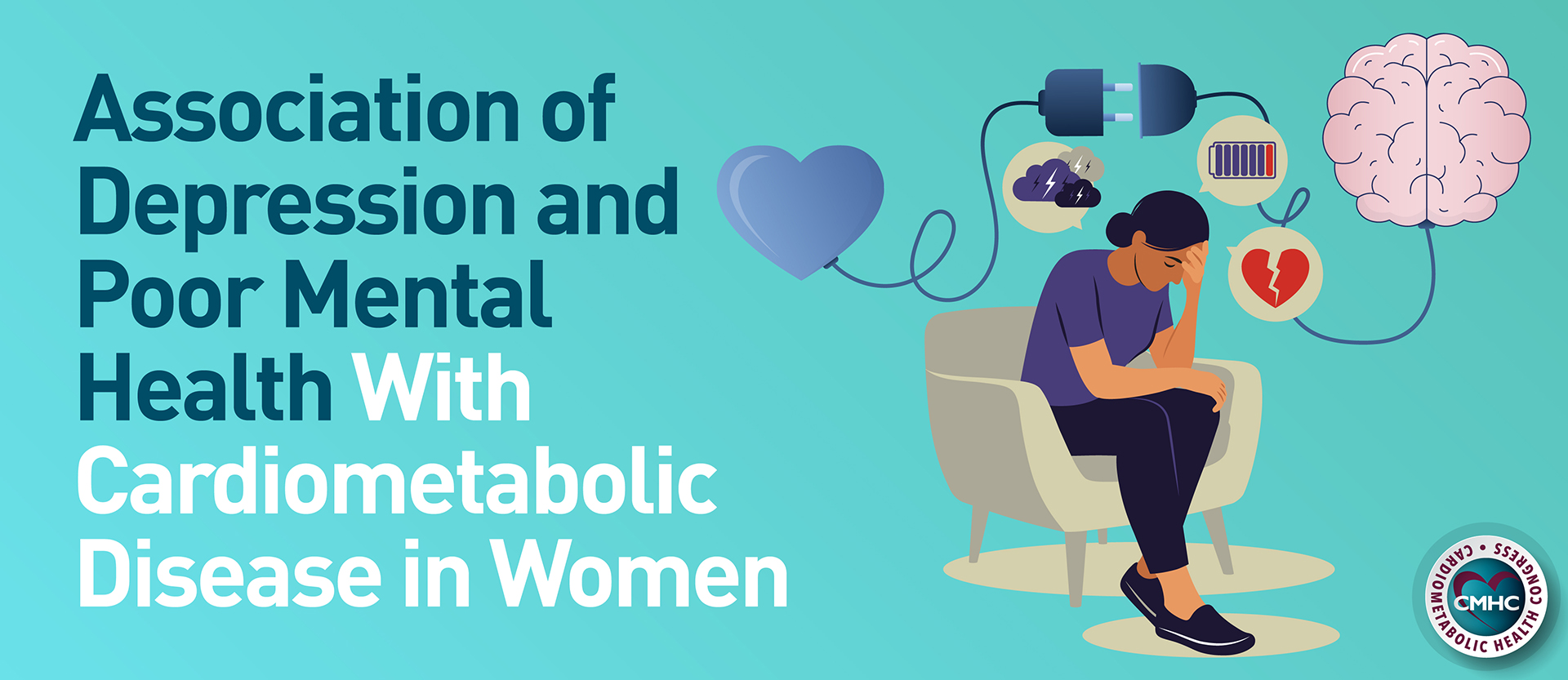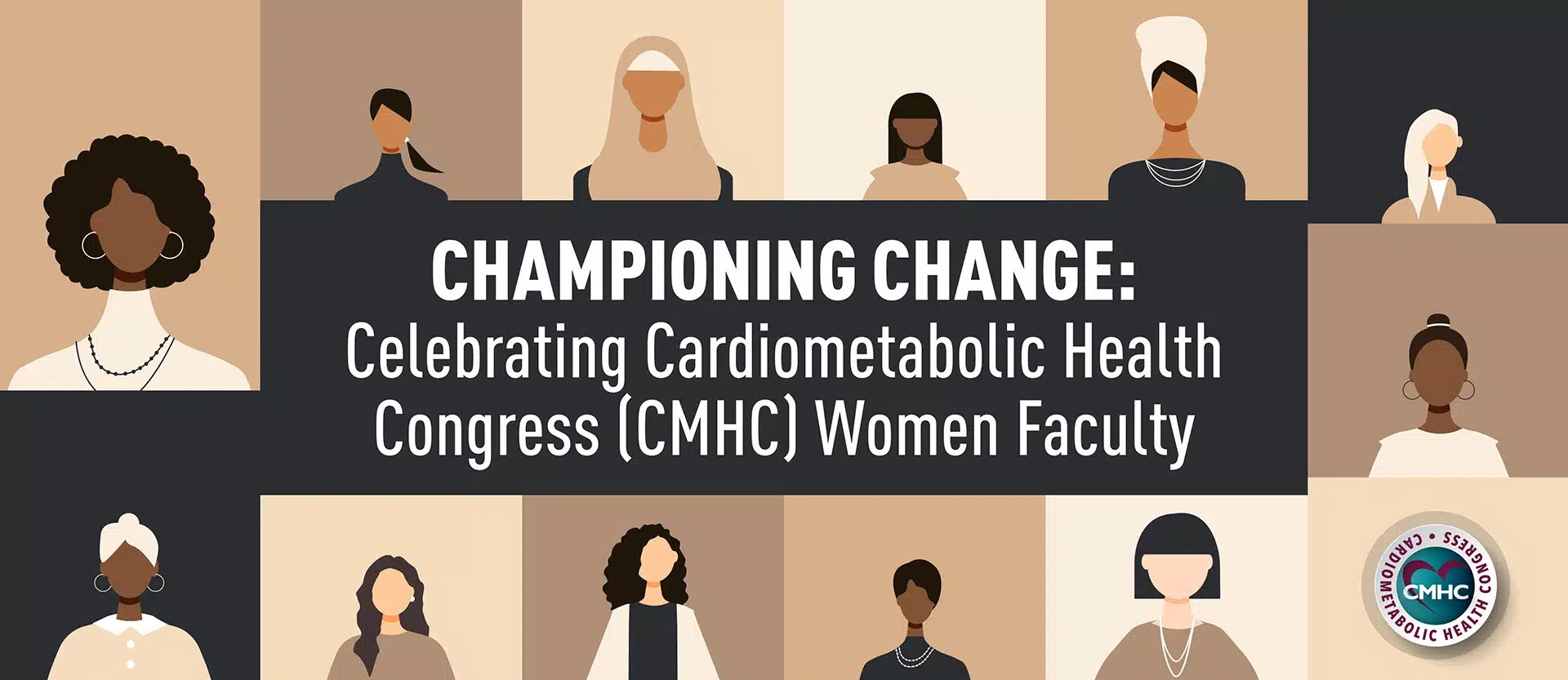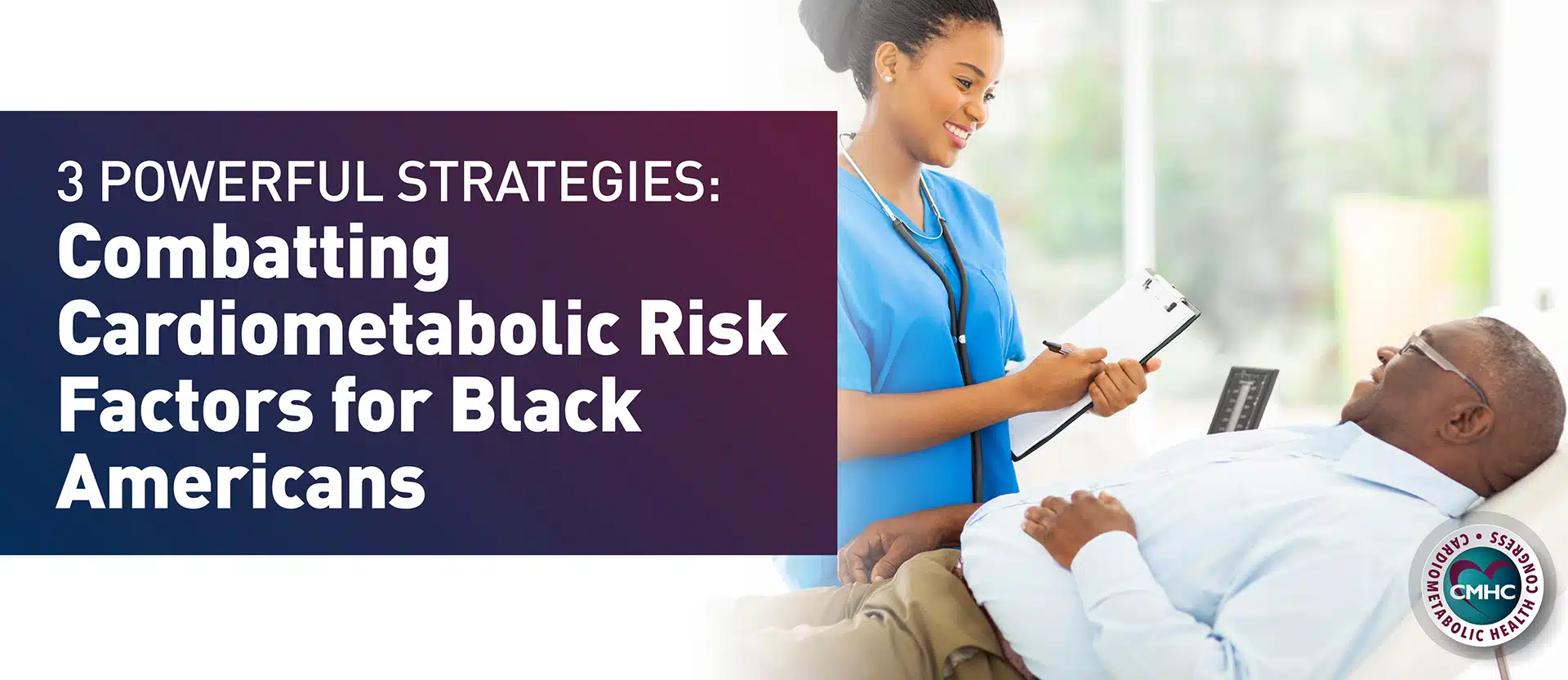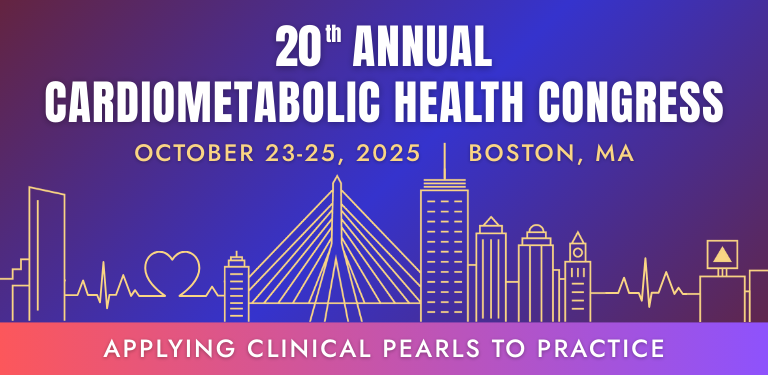Cardiometabolic Health Congress (CMHC) sat down with Dr. Keith C. Ferdinand, the Gerald S. Berenson Endowed Chair in preventive cardiology at Tulane School of Medicine and principal investigator of the Church-based Health Intervention to Eliminate Racial Inequalities in Cardiovascular Health (CHERISH) study, to learn how he’s offering screening and care to Black communities where they work, live, play and pray.

Tell us about bringing cardiovascular care to Black communities in New Orleans through the CHERISH study.
Keith C. Ferdinand, MD: A novel source of health intervention uses a church-based setting. We know within the Black community for centuries the church has been a meeting place. A place of comfort. A place of strength. In fact, many of the leaders of the civil rights movement in the 1960s were ministers, such as the reverend Martin Luther King Jr. What we have attempted to do with CHERISH is build on some of the interventions that have been shown to be successful using church-based settings. We use nonphysician clinicians such as nurse practitioners, community health workers, or persons who have an interest in controlling risk factors that may not have an advanced degree. They offer community members counseling in physical activity, diet, cooking, and how to self-monitor blood pressure. In many cases, for those who are in the hypertension cluster, we give them needed medicine, removing the barrier of the multiple costs of even generic copays. The idea is that if you use an intervention in the community setting you get the people where they are. You get them where they’re comfortable. And you use providers who are culturally sensitive and communicate appropriately in terms of literacy level. We think using this model we’ll be able to better control multiple cardiovascular risk factors, not just looking at hypertension.
Can you speak about health barriers faced by underserved communities, both seen and unseen?
Dr. Ferdinand: You talked first about the tangible. These are structural inequities, and they include having no (or suboptimal) insurance. Many times patients will have lesser-quality insurance such that the copays are higher and there are more restrictions on branded medicines and devices. The other thing that you mentioned was the unseen. The soft changes in how people perceive medicine that affects their care. It’s not simply because patients are uneducated or ignorant. There’s a real history of bias in the United States medical system. If you go back for decades in conventional medicine you’ll find evidence of ideas that certain populations were less-than worthy of the same degree of care as others. There was also something called redlining. It’s a term from the 1930s in which the government drew red lines around certain neighborhoods which they felt were disadvantaged in terms of offering homeowner loans and business loans. Those neighborhoods were often more highly populated with recent immigrants, Black people, and other racial or ethnic minorities, and were unstable environments in terms of crime. The problem is if you fast forward now to the 2000s, those same unstable neighborhoods have been clearly demonstrated to have a higher risk of cardiovascular disease and cardiometabolic risk, including diabetes and hypertension.
“It’s nonsensical for us to think that the magic 15-minute visit with a primary care clinician two to three times per year is going to control these chronic conditions which patients live with 24/7.”
Can you speak more about the historical aspects of why Black patients may feel that the medical community doesn't have their best interest in mind?
Dr. Ferdinand: Most patients can’t really tell you exactly what the Tuskegee Study was, but they recognized that there was a time in which Black patients in a research study were treated very unfairly. Some patients know about the Henrietta Lacks story, in which her cells were used for a universal line of cancer cells without the consent of the family. So, if you look at those unforeseen, unmeasured, difficult-to-document barriers, it leads to mistrust and distrust. The persons may be very kind and accepting in the doctor’s visit but then won’t adhere because they have not bought into the process. That is what led us to the whole idea of community interventions where you try to address the social determinants of health by overcoming some of these barriers; going out to the community itself in order to initiate screening and follow-up.
“Many young clinicians may not recognize that decades ago clinicians would never be seen outside of their office or hospital setting. What we take for granted today is that screening in those unusual environments was something quite unique.”
How have church leaders and care providers responded to the CHERISH initiative?
Dr. Ferdinand: We have had enthusiastic uptake. We had a meeting approximately a month ago in which 35 representatives of churches in predominantly Black neighborhoods came and received the program and signed up for the program. The proof, of course, will be in the pudding. The program is adequately funded by National Heart, Lung and Blood Institute through the Disparities Elimination through Coordinated Interventions to Prevent and Control Heart and Lung Disease Risk (DECIPHeR) Alliance, and there are similar programs looking at other types of interventions throughout the United States.
What are some precedents of this kind of community health intervention model?
Dr. Ferdinand: Perhaps the best example is the Los Angeles Black Barbershop Study. Many new public health officials and young clinicians and researchers think that the Black Barbershop is a new concept, but it isn’t; it really dates back several decades. The Barbershop was a center of hypertension intervention in Baltimore, Maryland, under the auspices of the late Elijah Saunders, MD, with the Association of Black Cardiologists. Another early pioneer was the Healthy Heart Community Prevention Project here in New Orleans, under executive director Daphne P. Ferdinand PhD, RN. In another intervention led by principal investigator Ronald G. Victor, MD, who got some of his ideas from his experiences here in New Orleans when he was a medical student at Tulane. I knew Dr. Victor for many years, since he first tried the barbershop intervention in Dallas with limited success. He was very successful with a randomized cluster-controlled trial in South Central Los Angeles, in which he was able to show men with Stage 2 hypertension (with a mean systolic blood pressure of approximately 152) improving almost two-thirds of them to blood pressure of less than 130/90, and getting 80% to less than 140/90.
"We're talking about an intervention done in a comfortable setting with nonphysician clinicians using appropriate pharmacotherapy."
Why were barbershops identified as a setting to deliver care?
Dr. Ferdinand: Barbershops were identified as a place of care because men felt comfortable there. They had been coming on a regular basis, usually every two weeks, and in fact the inside joke is many of the guys would come to the barbershop even if they did not need a haircut. They came just for socialization, so it was to some extent a type of social and pleasure club. So they were already comfortable in that environment, then to have the barber partner with a specialty-trained hypertension pharmacist able to prescribe medicine and collaborate in a virtual manner with physicians. So those are three elements: a barbershop is a comfortable place; the community care was delivered by a trusted person trained by physicians; and they partnered with a pharmacist to provide appropriate medications.
How does the New Orleans community in particular benefit from the CHERISH model?
Dr. Ferdinand: Tulane University is an academic center in downtown New Orleans. It’s in a neighborhood that at one time – before integration – was an only-white academic center in terms of its medical school, and to a large extent its staff. We’ve reversed that. We now are using collaboration between Tulane University and the community to treat people where they are. The reason I think that’s important is that by addressing social determinants of health here in New Orleans, where people work, live, play and pray, we’ve seen a profound effect on outcomes.
“New Orleans is known as a place of great beauty, rich food and wonderful music, but it is also part of what the NIH calls the ‘Stroke Belt’ because of the high risk of heart attacks and strokes in this area. It also has high risks of diabetes and chronic kidney disease. Most of these conditions are higher in the African American population, and this leads to an increase in premature heart attacks and strokes.”
How do you suggest providers encourage patients to get proactive about staying healthy?
Dr. Ferdinand: The American College of Cardiology and the Association of Black Cardiologists want to empower patients to take care of themselves with shared decision-making. It is a more direct path to better outcomes than simply waiting for patients to show up with disease. There is a mantra; it’s only 5 words and I use it when I talk to patients. I say “Children should know their grandparents.” I’ll let it sit and marinate for a few minutes. I’m saying if you don’t take care of yourself, your grandchildren won’t know you. You’ll just be a picture on the mantle. They won’t get your wisdom. They won’t know the experiences or the history that you can offer.
Is CHERISH a health model that can be used in perpetuity, or is the ultimate goal to get people into the clinic for care?
Dr. Ferdinand: The short answer is yes. It doesn’t mean that you don’t go to the physician or the nurse practitioner for your usual visit, but the only way we’re going to address these disparities is by using community-based interventions that empower the patient to use what I call shared decision-making. I think novel approaches to controlling cardiovascular risk will be the only way we get out of the mess that we’re in. To those who don’t self-identify as a racial or ethnic minority, I will tell you that we pay for the disparities. Yes, it’s a human story. It’s a story of unequal treatment. But more importantly, for those who don’t self-identify as a racial or ethnic minority member, you pay for it. We’re wasting dollars along with wasting lives and wasting the hopes and dreams of people.
"A just society would not allow these inequities to persist."


